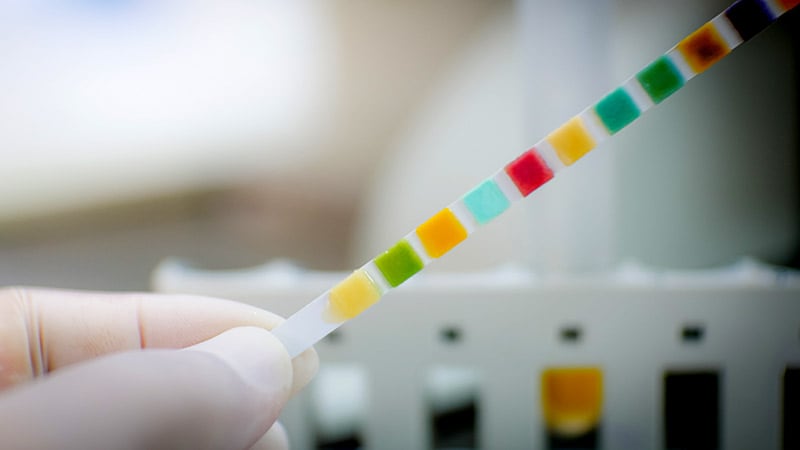[ad_1]
TOPLINE:
Point-of-care urine dipstick demonstrated higher sensitivity (90.2%) and specificity (92.6%) than laboratory urinalysis for diagnosing urinary tract infection (UTI) in febrile infants aged 2-6 months. The findings suggested laboratory urinalysis may not be necessary for initial treatment decisions.
METHODOLOGY:
- A cross-sectional analysis included 9387 previously healthy infants aged 2-6 months who presented with fever ≥ 38.0 °C at five pediatric emergency departments in the United States between January 2011 and December 2019.
- Researchers defined UTI as a urine culture growing ≥ 50,000 colony-forming units/mL of a single bacterial uropathogen obtained by catheterization.
- Analysis compared positive urine dipstick (≥ 1+ leukocyte esterase or positive nitrite) to dichotomized urine white blood cell (WBC) count using receiver operator characteristic curve analysis to select the optimal WBC cut point.
TAKEAWAY:
- Of 9387 febrile infants with urine cultures, 1044 (11.1%) had UTI, with Escherichia coli being the most common pathogen (923; 88.4%).
- Urine dipstick showed higher sensitivity (90.2%; 95% CI, 88.1%-92.1%) and specificity (92.6%; 95% CI, 91.9%-93.2%) than urine WBC count ≥ 7 cells per high-power field, which had a sensitivity of 83.9% (95% CI, 81.3%-86.2%) and a specificity of 87.0% (95% CI, 85.9%-88.0%).
- The optimal urine WBC cut point was determined to be ≥ 7 cells per high-power field overall, with different thresholds for dilute (≥ 26 cells) and concentrated (≥ 11 cells) urine.
IN PRACTICE:
“Urine dipstick is an accurate diagnostic test for UTI in older febrile infants, with important clinical implications for increasing the speed of diagnostic decision-making and reducing healthcare costs. Clinicians can use urine dipstick results (combining leukocyte esterase and nitrite) to guide initial antibiotic decisions while awaiting urine culture results,” wrote the authors of the study.
SOURCE:
The study was led by Kathryn M. Hunt, MD, Division of Emergency Medicine, Boston Children’s Hospital in Boston. It was published online in Pediatrics.
LIMITATIONS:
According to the authors, the study was limited by potential selection bias, as only infants who had urine cultures obtained were included. Not all infants had both urine dipstick and urinalysis performed, and the source of urine samples was assumed to be catheterization on the basis of standard practice. The researchers also noted that important UTI risk factors including history of previous UTI, circumcision status, and alternate sources of fever were not available for analysis.
DISCLOSURES:
The authors reported no relevant conflicts of interest. No funding was obtained for this study.
This article was created using several editorial tools, including AI, as part of the process. Human editors reviewed this content before publication.
[ad_2]
Source link : https://www.medscape.com/viewarticle/urine-dipstick-shows-higher-accuracy-than-laboratory-2025a10007gf?src=rss
Author :
Publish date : 2025-03-28 10:22:00
Copyright for syndicated content belongs to the linked Source.
